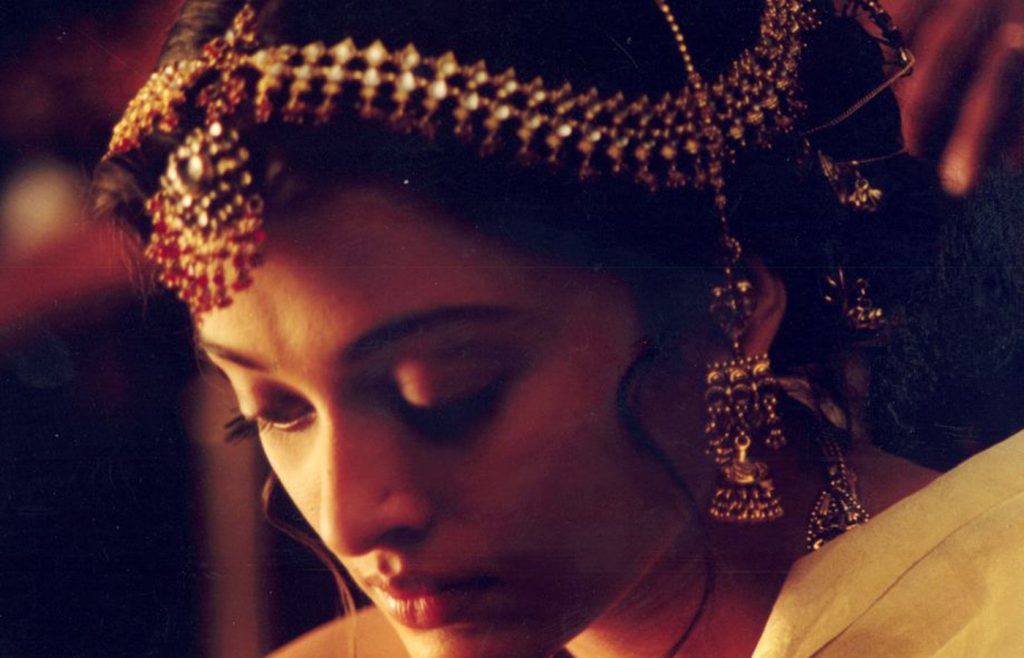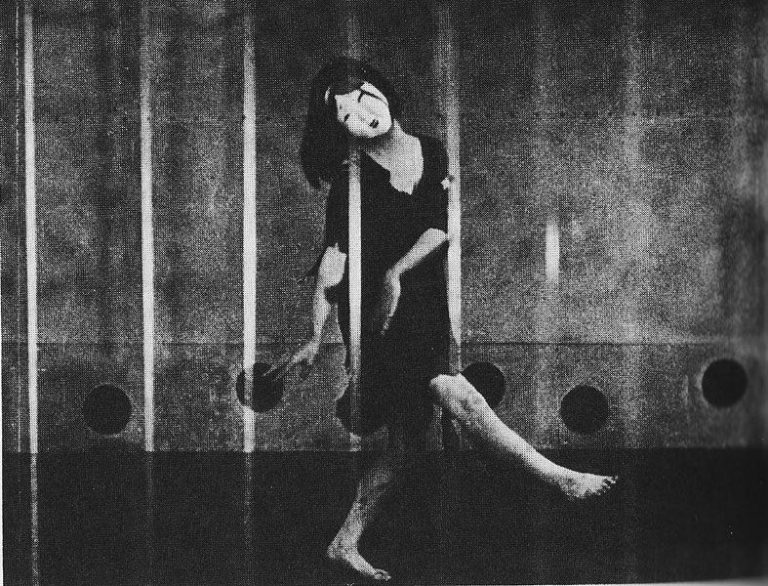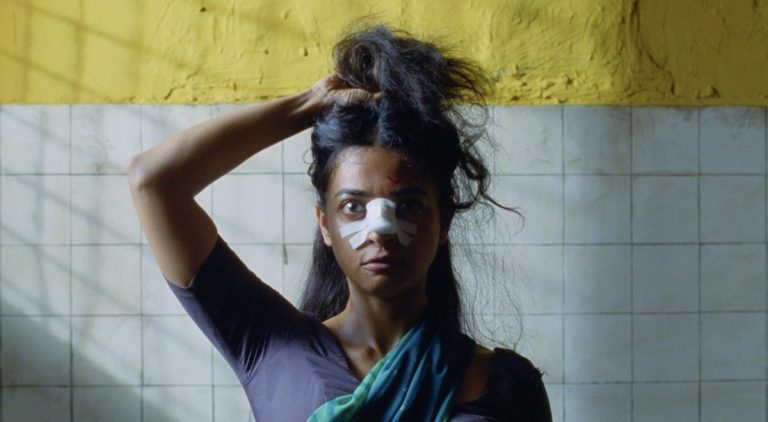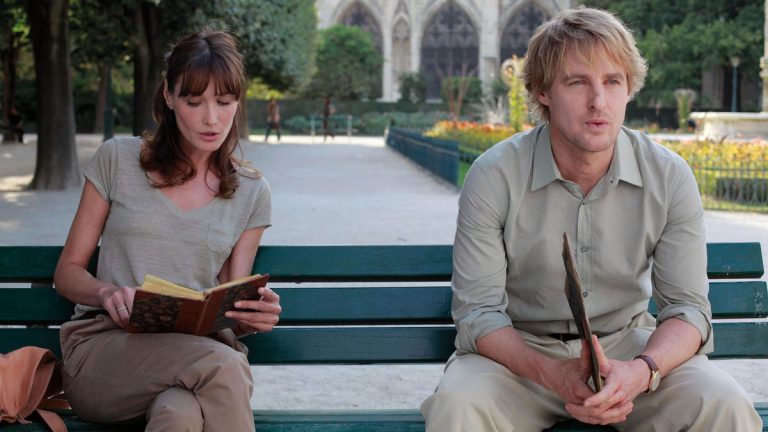If you are an Indian who spends just enough time on social media, you might have come across the stupid sensationalization around a set of pool pictures posted by Mandira Bedi. The hate comments for uploading pictures with another man within one year of her husband’s demise poured in so profusely that she had to turn off the comments on her post. I don’t intend to serve you with street-side pop-culture gossip, but tell you that it is the 21st century, and we continue to look at widows in a negative light. After all, haven’t popular religious texts suggested that the life of a woman is one half her husband, who, when dead, leaves his widow half dead?
What makes me cruelly angry is that mainstream Indian films have done little to break the oppressive shackles that bind the image of an ideal, respectful widow. Popular Indian films, including Kati Patang (1971), Aval Oru Thodar Kathai (1974), and Rajneeti (2010), have always ended up portraying them as emotionally and socially burdened by the deaths of their husbands.
They must have another man in their life to make them whole again; they must carry forward their husbands’ work after their deaths. We cannot imagine a widow separately from their dead husband, let alone making them protagonists in mainstream narrative, except for a few in the last decade, such as Qarib Qarib Singlle (2019).
Therefore, I have merely attempted to curate a list of 10 essential Indian films on widowhood that not only ascribe important roles to widow characters but refuse to align them with the image of their dead husbands. Not all these films have been box office hits; some have only gathered accolades in film festivals. However, I believe this list will help be a conversation starter around the unfair, regressive, patriarchal codes of morality that we continue to bestow upon widows in society. If you think you have other important films to add to this list, please feel free to comment below. Happy reading!
1. The Last Color (2019)

Directed and produced by chef-turned-director Vikas Khanna and starring one of Neena Gupta’s most brilliant performances, this movie offers a sneak peek into the lives of the widows who live in Vrindavan, Varanasi, India. Our marginalized protagonists, Noor and Chhoti, a Dalit performer, emanate a warmth of understanding and comfort with a little banter on the side (swad anusar).
The narrative brings together the protagonists as they try to shed the traditional status imposed by their social status. The 90-minute drama perhaps required a little more spice and sauce to make its point stand out, but it is unique in its brave attempt to juxtapose the lives of the protagonists with Holi, the Hindu festival of colours. It screened at the New York Indian Film Festival in 2019.
Considering Vrindavan houses one of the largest populations of widows in India, the film holds up a little token of what it is like inside this space traditionally demarcated for widows. It grapples with a lot of issues that hand state-sponsored violence, the gaze of the privileged sex and class, sex trafficking, etc.
It is based on the real instance of the Holi celebration dating back to 2012 in Vrindavan, a festival ritually forbidden for widows since they were believed to have lost all colours in life with widowhood. Gupta’s white-clad moments of enjoyment in the colour rain offer themselves up for a study, but the colour motif becomes repetitive. Some plot points wane to open up more space for studying Noor and her budding maternal instincts for Chhoti. This movie brings us uncomfortably close to a reality that most Indians are unaware of.
2. Aise Hee (2019)
Directed by Kislay, this film presents a relatively simple idea of a freshly widowed woman of 72 living her own life. In its 120-minute runtime, it explores how her choice to live alone has stirred up the middle-class society in Allahabad. The conversation surrounding her widowhood begins right at the film’s start when people assemble at her house following her husband’s demise. Most people sympathise with her, but death brings with it an opportunity for liberation, teaching her to make small choices for herself, like choosing an ice cream flavour.
The narrative ropes in other everyday power struggles in a patriarchal, middle-class family set up to lay bare the several binding chains that affect our choices. Is her liberation into widowhood any liberation at all? Kislay invades the private spaces of the Sharma family to help us seek the answer.
In her quietness and thoughtful observations, Mrs Mohini Sharma, played by Mohini Sharma, constantly reminded me of Supriya Pathak’s character of Amma in Ram Prasad ki Thervi (2019), another remarkable film that holds up the choice of an elderly widow. Maybe it is the age group we are dealing with, but her quiet resilience against the world’s unending speculation makes you think why we cannot, in most cases, allow them the space to grieve a loss and retrieve the space they had been forced to lose in all these years of navigating family life. The absence fulfils her presence. It is a rightly portrayed bittersweet feeling.
3. Shet Patharer Thala (1992)
Directed by Prabhat Roy, this Bengali language drama from the 1990s is based on the famous Bengali author Bani Basu’s titular novel. It brings forth a harrowing image of widowhood, as experienced by a loved daughter-in-law in a typically modern Bengali family. However, it doesn’t dwell upon it.
Bandana, played by Aparna Sen, loses her husband in a car accident seven years after her marriage. The changes she is forced to undergo concerning her clothing, mannerism, and food habits while she is coping with the loss of her husband are haunting, almost similar to the forcefully captive cow in one of the scenes. Life goes on; the film proceeds to show us how Bandana singularly raises her son, dabbles with her budding desires for an artist friend, and doesn’t let the token of widowhood steal away her agency as a mother and a woman.
Sen delivers one of her career-best performances in this film. In one of the most remarkable scenes, where she is fetched to the kitchen and served food fit for a widow by her mother-in-law, her cool protest against this sordid ritual and the food shakes up the family present. It makes us remember that her husband’s death is not meant to mark the untimely death of her existence.
To make things worse, even her son begrudges her as a child and a young man for his father’s demise and her growing affections towards another man. We understand how patriarchy singles out the widows and blames them for everything, threatening to stifle their existence. The movie, however, stands out because Bandana refuses to be bound by these shackles forced upon her.
4. Chokher Bali (2003)
Directed by Rituparno Ghosh, Chokher Bali is a Bengali language drama adapted from the Nobel Laureate Rabindranath Tagore’s famous novel. The story follows the life of Binodini, a young widow played by Aishwarya Rai Bachchan. She returns to her village to meet the newlywed Mahendra, played by Prosenjit Sengupta, and his wife, Ashalata, played by Raima Sen. The marriage is threatened by a hedonist affair between Binodini and Mahendra, one that Ashalata eventually gets a wind of.
A pregnant Ashalata leaves for Kashi, and Binodini insists that Behari, Mahendra’s best friend, played by Tota Roy Chowdhury, marry her. The story follows these four lives as they navigate the complex webs of adultery, love, and marriage for a socially recognisable relationship with a sizable focus on Binodini’s character as a widow. It won the National Award as the Best Bengali Feature film in 2003.
Related to Films on Widowhood: 10 Essential Rituparno Ghosh Movies
In the late 19th century, widows were treated as outcasts in Bengali society. The Widow Remarriage Act had been officially passed in 1856, but society continued to look upon widows as a bane of existence. Binodini is young, educated, and widowed shortly after marriage. Her widowhood stains her social life, forcing her to live like a shadow in society.
However, she is full of bodily desires and willingly engages in a sexually charged affair with Mahendra. Rai Bachchan helps the character of Binodini traverse a full circle of emotions from sorrow to vengeance to love to acceptance of her position in society. Interestingly, Mahendra’s mother, Rajlakshmi, is also a window and a foil to Binodini’s character. She has accepted herself as a shadow in society and spends her days at God’s feet. Binodini is one of the best portrayals of the Bengali Renaissance woman and one of the most modern portrayals of widows in Bengali literature in the early 1900s.
5. Water (2005)

Directed by Deepa Mehta, this is the third film in the Elements trilogy that premiered at the 2005 Toronto International Film Festival. Chuyia, played by Sarala Kariyawasam, is an 8-year-old widow. She is sent away to live in an ashram by the riverside, which is home to widows of all ages and generations; in fact, the elderly widow who welcomes her tells her that she was just her age when her aged husband died, and she came to live here.
Thereafter, begins Chuyia’s slow but steady adaptation into this ashram life as the hierarchies within this space come to the forefront, from the religious Shakuntala, played by Seema Biswas, to the beautiful, long-haired Kalyani, played by Lisa Ray. Does Chuyia’s life disappear under the inkblot of widowhood? Mehta draws a watercolour portrait of sisterhood, tragic love, and widowhood in pre-independence India.
In one of the scenes, when Shakuntala has gone to fetch water at one of the ghats, she is rebuked by the priest performing puja for a married couple to ensure that her shadow doesn’t touch the newlyweds. As she makes her way back, behind her, a funeral pyre burns bright. The scene is poignantly composed.
Mehta packs the entire film with revelatory commentary on the living conditions of widows. She spends a lot of time capturing the innocence of young Chuyia, making her a foil to all the elders at the ashram, and helps us look at her experience as a widow through her eyes. Most importantly, the film weaves the grander scheme of contemporary national politics and Gandhian ideas of life and liberation.
6. Goynar Baksho (2013)

Directed by Aparna Sen, it is a Bengali horror-comedy film based on a titular novel and a short story, Rashmonir Shonadana, written by Shirshendu Mukhopadhyay. The story follows a jewellery box (or goynar baksho) handed down across three generations in the family, weaving socio-political commentary into the narration.
Pishima, played by Moushumi Chatterjee, is the widowed matriarch of a landed gentry family who hands over this jewellery box to her niece-in-law, Somalata, played by Konkona Sen Sharma, who eventually gives it to her daughter, Chaitali, played by Srabanti Chatterjee. The jewellery box, a metaphor for prized possessions, sees the family through its years of affluence, partition, and feigning powers and into the years leading to the Bangladesh Liberation War, 1971. Sen’s tale is thickly layered with social commentary and humour; a film to relish and remember.
Pishima was widowed at the tender age of 11. The film begins with the harrowing scene of unclothing and re-dressing a young girl in a white saree believed to be fit for a widow. She grows up into a woman with a haughty temper, whose desire for a better life, good food, a respectful position in her family and society, and sexual needs are all channelled into her inseparable affliction towards her jewellery box.
After she dies, Pishima returns as a ghost to haunt Somalata about the whereabouts of her prized possessions. We realise that her spirit now has an autonomy that she hadn’t been able to exercise to her full capacity when she was alive. She is frivolous in her queries to Somalata about her intimate affairs and intentionally punishes her family members for their evilness.
She also smokes a hookah and rides on Chaitali’s scooter, momentarily snapping the generation gap between the women, making us wonder if she could do it because of her widowhood or her ghostly identity. Perhaps, widows are also ghosts in a way. Her cut-throat humour is spot-on. The film presents the 19th-century widow as refreshingly unique despite the circumstances leading up to her being the same old.
7. Nathicharami (2018)
Directed by Mansore, this Kannada language drama brings into focus the desires of a young widow, Gowri, played by Sruthi Hariharan, and won six awards, including the Best Feature Film in Kannada, at the 66th National Film Awards. Gowri is struggling to cope with the pain of her husband’s demise.
It creates a vacuum in her that shows through her associations with her domestic help, her friends, and even with the man to whom she is attracted. The writer, Sandhya Rani, makes no effort to keep her dilemma a secret. Her confessions bring along a certain societal dejection towards her. Does Gowri act upon her desires? The questioning of a patriarchal Kannada society with a widow at the focus is a breath of fresh air.
The simple yet complex understanding of her physical desires that the character of Gowri brings to the table was faintly reminiscent of the character of Usha, played by Ratna Pathak Shah, from Lipstick Under My Burkha (2016). The extremely regressive societal belief that widows cannot desire other men is directly juxtaposed with the move-on-its-your-life litany that society throws at them. Mansore holds up a mirror to this hypocrisy. What makes it special is a fine thread of sub-plot around the notion of consent in a relationship, with the women characters exercising their agency in clear, bold words.
8. Widow of Silence (2018)
Written, directed, and produced by Praveen Morchhale, this film debuted at the Busan International Film Festival in 2018. At the start of the film, we find our protagonist, Aasia, played by Shilpi Marwaha, strapping her despondent mother-in-law to the chair while sunbeams are strewn upon her.
Later, we know that Aasia’s husband has gone missing – no, not died – after an interrogation was conducted by the Indian military seven years ago. Hope – like the river in this Kashmiri landscape – runs throughout the film as Aasia negotiates her way around government officials, the hospital, her daughter’s inquisitions, and the men in uniform, with driver Bilal by her side. Does hope wash over the bitter anxiety of loss? Morchhale’s film, especially in its final minutes, is scathingly extraordinary.
This situation is peculiar to border areas, most notably Kashmir, where several men disappear after military interrogations and are never declared officially dead. Their wives are branded as ‘half widows’, a state of in-between that doubles up to a conundrum that the political state of Kashmir itself has seen since the early years of Indian independence.
Morchhale offers a unique glimpse into the lives of their women and tries to leave their silences unstirred. In a deeply moving scene, Aasia tells her daughter that with enemies galore, they should find strength in only the truth that they believe in. Shilpi brings out a fine display of this courage in all her character’s associations, especially with the corrupt official who calls her a “young, beautiful but foolish lady.” This is an unknown story of an unexplored reality that more people should come to learn about.
9. Sati (1989)
One of my favourite films, directed by Aparna Sen, this Bengali language drama takes us to a rural village in early 19th-century Bengal, India. Uma, played by Shabana Azmi, is a mute young girl with a horoscope that predicts an early widowhood after marriage, limiting her chances of marriage to any prospective groom.
She lives wild, carefree days by the riverside, especially finding comfort in the shadows of a big, old banyan tree. She is later married to this tree, but did the stars lie about her future predicament? Sen handles this theme with care rarely ever witnessed in Indian cinema. She is not preaching the idea of Sati, the practice of a wife sacrificing her life at her husband’s funeral pyre, but she is commenting upon the blind faiths that governed society back in the day and perhaps still do.
The film opens with the harrowing image of a sati being committed. The sky is blood red, and the chants linger long after we have entered into the main narrative of the film. We don’t engage directly with the idea of widowhood, except through snatches of mentions of Uma’s unlucky horoscope predictions. Instead, we are made to wait, with the battered breath, for the same to strike upon Uma. The patriarchal hegemony and the family matriarch’s relentless tirade against her constantly show us how Uma suffers at the hands of society for her disability and femininity.
10. Pagglait (2021)
Written and directed by Umesh Bist, this Hindi language drama is, according to me, one of the best portrayals of a Hindu, semi-urban, middle-class widow in contemporary Indian society. Sandhya, played by Sanya Malhotra, is widowed only five months into her newly wedded life with Astik. She is unable to grieve the death of her husband, whom she barely knew, and spends the 13-day mourning period learning more about her dead husband and herself.
While Sandhya puts on the garb of a merry widow, the family around her is buzzing with activity. Sandhya must remarry, but what does Sandhya really want? The story is weirdly feel-good and makes us question if, after all these years, we, as a society, have really been able to progress in how we view our widows.
Pagglait featured in our list of the 6 Best Hindi Movies of 2021
No matter how progressive we call ourselves, we still bind the widows to regressive traditional ideas. Sandhya is expected to grieve in a certain way; she astonishes everyone by not crying out loud or wearing white colours. Instead, her voracious appetite for ‘golgappe’ makes her lie to her family. She becomes a monetary asset. Her in-laws go to the extent of proposing a levirate marriage, a marriage within the family with one of Astik’s cousins, so that the monetary inheritance stays within the family.
It also brings forth the idea that we cannot think of a young widow without the association of another man. From prohibiting remarriage to forcing them to remarry, we have come a long way in amending the situation to our benefit. The best thing about the film, however, is that Sandhya doesn’t give in to these pressures. She follows her own heart as she goes about unravelling the persona of her late husband and his affairs. She aims to secure an individual identity for herself. It is not a perfect film, but it successfully informs society of the approach it should adopt towards widows – just let them be.
















![Nayattu [2021] Netflix Review: A Taut Thriller of Contradictory Politics](https://79468c92.delivery.rocketcdn.me/wp-content/uploads/2021/05/Nayattu-768x576.jpg)
